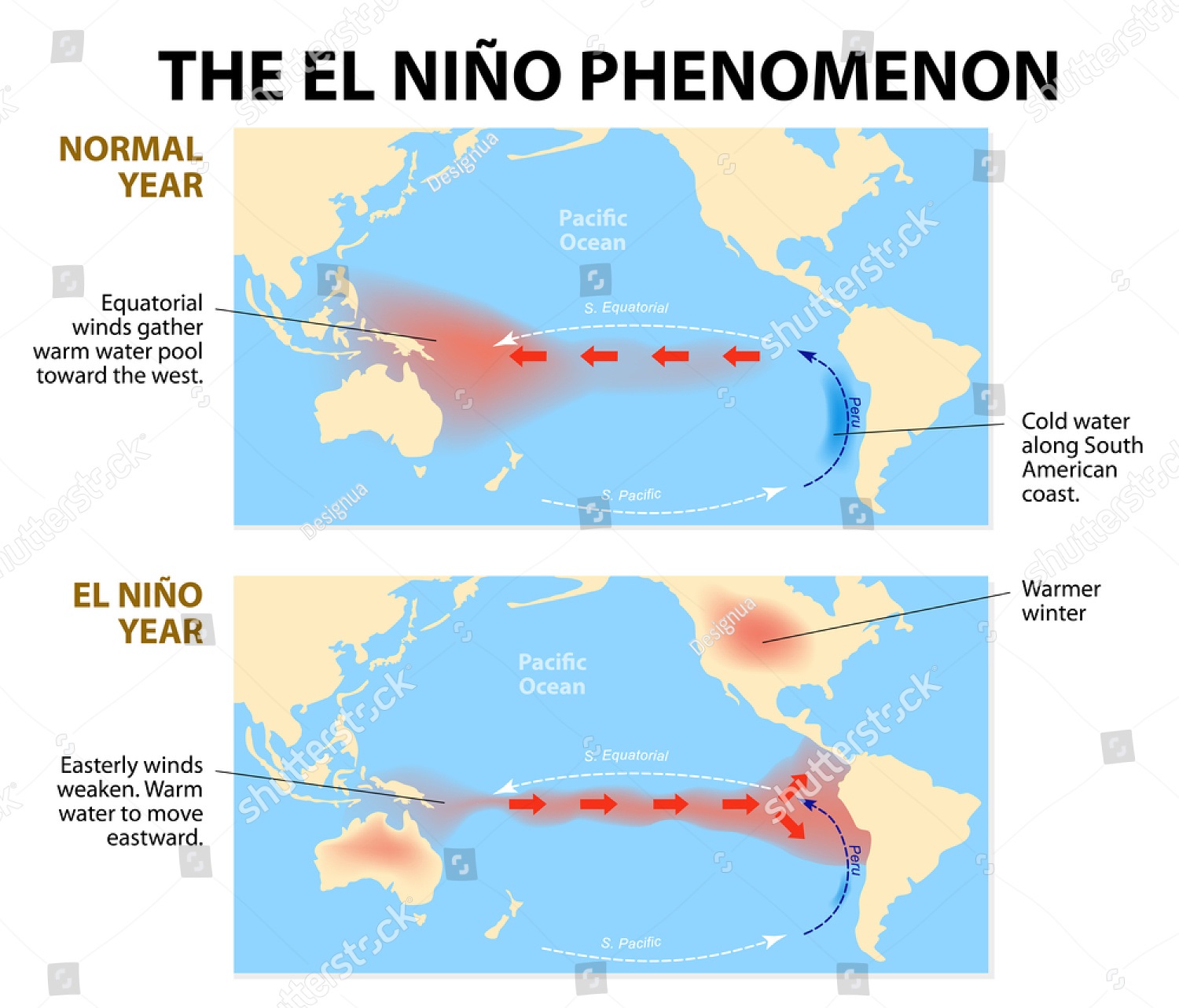Definition
El Nino is defined as abnormally high sea temperatures in the eastern Pacific Ocean having a profound effect on global climate.
Description
The trade winds tend to push warm air and water towards the western side of the Pacific Ocean and cold water wells up from the deep ocean along the eastern side of the Pacific along the coasts of Peru and Ecuador.
The weather in the western Pacific is therefore characterised by low pressure and thunderstorm activity, as well as typhoons.
For reasons yet to be fully understood, in some years the water temperature in the east central and eastern side of the Pacific becomes abnormally high and the waters in the western Pacific are cooler than normal.
The phenomenon was named “El Niño”, or “Boy Child”, by the South American sailors who noticed that it often occurred at Christmas time. This phenomenon may last a few weeks or many months and may possibly be caused by a combination of factors including:
- Tropical Revolving Storm activity which may lessen the effect of the Trade Winds.
- Volcanic Ash clouds affecting solar heating of the ocean.
Often, following an El Niño event, the waters of the western Pacific become a lot warmer than usual, and the upwelling of cold waters along the west coast of South America becomes more pronounced than usual. This event, the opposite of El Niño, is known as La Niña or “Girl Child”.

Effects
El Niño events affect climatic conditions around the globe, including:
- Warm and very wet weather in Peru and Ecuador with severe flooding in places;
- Wetter than normal weather in southern Brazil and Argentina;
- Cooler and wetter weather in the south western USA;
- Decreased Hurricane activity in the western Atlantic;
- Drier than normal conditions in northern Australia and South-east Asia often leading to forest and bush fires causing haze and limited visibility.
